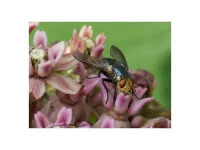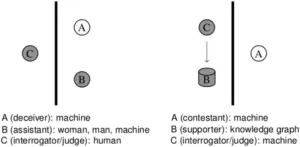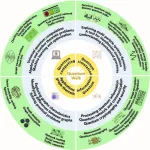(Press-News.org) Triple-negative breast cancer (TNBC) is an aggressive breast cancer. It spreads quickly and has few treatment options. It is also serious because of its rate of recurrence.
Black women are twice as likely as white women to be diagnosed with TNBC. They are also more likely to die from the devastating disease. In fact, the five-year survival rate for TNBC in Black women is only 14% compared to 36% in women from other racial backgrounds.
Multiple biological and socioeconomic factors are blamed for this higher risk. UC Davis Comprehensive Cancer Center researcher Sanchita Bhatnagar and her team have been working to get to the bottom of the genetic determinants of the racial disparity in TNBC. Results from their research were recently published in EMBO Reports.
Unraveling the mystery
The Bhatnagar Laboratory has been studying a protein called TRIM37 for over 10 years after Bhatnagar discovered its role as a breast cancer-causing gene.
A decade ago, Bhatnagar discovered the role of TRIM37 gene in causing breast cancer. Since then, her lab has studied the protein encoded by that gene. The protein, called TRIM37 in reference to the gene, is present in high numbers in breast cancer tissues. It is associated with poor patient survival.
TRIM37 is a driver of TNBC spread and resistance to chemotherapy. Bhatnagar and her research team have persevered in studying TRIM37 to find out why it may hold the key to Black women getting and dying of TNBC at high rates.
The study’s findings could help develop TRIM37 as a predictive biomarker, which eventually could improve TNBC diagnosis and prognosis in Black women.
The hunt for the biomarker
Bhatnagar, who is an associate professor with the UC Davis Department of Medical Microbiology and Immunology, said the missing link appears to be a predictive biomarker. It may help identify patients at risk of aggressive TNBC.
“We discovered that the TRIM37 variant known as rs57141087 is predominant in Black women and modulates TRIM37 levels through enhancer-promoter interactions,” Bhatnagar said. “Specifically, TRIM37 overexpression in early stages of triple-negative breast cancer promotes neoplastic transformations (formation of tumor), accelerates tumorigenesis (tumor growth) and drives cells into malignancy (spread of cancer).”
Essentially, if a patient has tumors with high levels of TRIM37 protein, it indicates poor prognosis and overall survival and an increased likelihood of metastasis. Increased early-stage TRIM37 levels appear to give cancer cells a “head start,” impacting the disease trajectory and outcomes.
In this latest research, Bhatnagar’s lab showed that the cancer-free breast tissue from Black women expresses a relatively high level of this protein, which predisposes them to aggressive disease. The rs57141087 variant might be the reason why.
Methodology
The research team used comprehensive genomic and functional analysis to uncover the genetic drivers that predispose Black women to aggressive TNBC. The analysis identified the ancestry-specific, genomic feature at a single base position in DNA called rs57141087.
Information from a total of 319 patients was included. Interestingly, the meta-analysis revealed ~1.63-fold higher TRIM37 expression in early histological Stage I TNBC tumors from Black women than in white women, which was not the case for Stage II–IV.
The team’s analysis confirmed the association between TRIM37 expression in the Stage I TNBC tumors with racial identity. Next, the researchers assessed to what extent the early-stage differences in TRIM37 expression could explain the disparity in the overall survival of TNBC patients.
The findings showed Black women with TNBC tumors expressing high TRIM37 showed poor overall survival, with a median survival of ~114 months (9.5 years) as compared to white women, with a median survival of ~245 months (20.4 years). Notably, no significant differences in overall survival were observed for low TRIM37-expressing TNBC tumors from Black women and white women.
The team has previously engineered a novel TRIM37 targeting approach. They used TRIM37-specific, synthetic RNA-based inhibitor delivered in vivo by small vesicles, called nanoparticles.
A patent for targeting TRIM37 using nanoparticle delivery mechanisms is pending.
“Our work provided pre-clinical proof-of-concept regarding TRIM37, a clinically relevant target for TNBC treatment,” Bhatnagar said. “Our hope is that further research can be done to test TRIM37 as a therapeutic target for slowing down TNBC and develop TRIM37 as a predictive biomarker for TNBC in Black women.”
Other authors:
Along with Bhatnagar, other UC Davis Comprehensive Cancer Center contributors include Laura Fejerman, Jogender Tushir-Singh, Xiaoson Huang, Hong Li and Jie Li. The lead authors include Rachisan Djiake Tihagam, a graduate student, and Song Lou, a project scientist in the Bhatnagar Lab. Piotr Przanowski, who was a member of the Bhatnagar Lab when it was located at the University of Virginia, also contributed to the research.
This project also provided research opportunities to UC Davis undergraduate students Kammi Song-Yan Liu and Bon II Koo. Arjun Tushir Singh, a senior at Davis High School, was also involved with the study as part of a high school science program hosted by the UC Davis Department of Medical Microbiology and Immunology.
Funding:
NCI R01CA248930/HHS | NIH | National Cancer Institute (NCI)
NCI R01CA248930-S1/HHS | NIH | National Cancer Institute (NCI)
The METAvivor Foundation
END
UC Davis researchers help decode the cause of aggressive breast cancer in women of color
Findings point to a biomarker that may give a “head start” to triple-negative breast cancer in Black women
2024-12-20
ELSE PRESS RELEASES FROM THIS DATE:
Researchers discovered replication hubs for human norovirus
2024-12-20
Human norovirus, a positive-strand RNA virus that is the leading cause of viral gastroenteritis accounting for an estimated 685 million cases and approximately 212,000 deaths globally per year, has no approved vaccines or antivirals. Paving the way for improved drug therapies, researchers at Baylor College of Medicine and the University of Texas, MD Anderson Cancer Center report in Science Advances the discovery of replication hubs for human norovirus, which could lead to designing antiviral drugs to prevent, control or treat these infections.
“When viruses infect cells, they usually create specialized compartments ...
SNU researchers develop the world’s most sensitive flexible strain sensor
2024-12-20
◦ Seoul National University College of Engineering announced that a research team led by Prof. Seung-Kyun Kang from the Department of Materials Science and Engineering at Seoul National University (first authors: Dr. Jae-Hwan Lee and Ph.D. candidate Yoon-Nam Kim) has developed a strain sensor with record-breaking sensitivity in collaboration with researchers from Dankook University, Ajou University, and Purdue University. This groundbreaking study introduced an hypersensitive, flexible, and stretchable ...
Tiny, wireless antennas use light to monitor cellular communication
2024-12-20
CAMBRIDGE, MA – Monitoring electrical signals in biological systems helps scientists understand how cells communicate, which can aid in the diagnosis and treatment of conditions like arrhythmia and Alzheimer’s.
But devices that record electrical signals in cell cultures and other liquid environments often use wires to connect each electrode on the device to its respective amplifier. Because only so many wires can be connected to the device, this restricts the number of recording sites, limiting ...
Neutrality has played a pivotal, but under-examined, role in international relations, new research shows
2024-12-20
Researchers have developed a new way of understanding international relations by analysing almost 200 years of alliances, hostilities and neutrality between countries.
The research team, led by Edinburgh Business School at Heriot-Watt University in Edinburgh, Scotland, concludes that neutrality has played a far greater role in global stability than previously thought – but has been under-explored and often mislabelled.
The study analysed 192 years of data between 1816 and 2007 from the Correlates of War (CoW) project, which collects and shares data on international relations.
Lead author Dr David Dekker, a Research Fellow at Edinburgh Business School, ...
Study reveals right whales live 130 years — or more
2024-12-20
New research published in Science Advances reveals that right whales can survive for more than 130 years — almost twice as long as previously understood.
Extreme longevity is a trait common to the right whales’ cousins, the bowheads.
Scientists working with Indigenous subsistence hunters in Utqiaġvik used chemical analysis of harvested bowhead whales to show they can live more than 200 years. Corroborating the chemical evidence, hunters have recovered 19th-century harpoon tips from bowheads taken in ...
Researchers reveal how human eyelashes promote water drainage
2024-12-20
Throughout human evolution, body and facial hair have notably diminished, yet eyelashes have remained a distinguishing feature. The physiological or functional purpose of eyelashes—traditionally thought to be for catching dust or filtering air, etc.—has long been debated.
However, a team of Chinese researchers has recently elucidated the characteristics of human eyelashes. Their study reveals that eyelashes consist of a hydrophobic, curved, flexible fiber array, featuring ...
Pollinators most vulnerable to rising global temperatures are flies, study shows
2024-12-20
UNIVERSITY PARK, Pa. — Despite their reputation as buzzing nuisances, flies serve a critical role as some of the Earth’s most prolific pollinators — and new research led by Penn State scientists suggests they are increasingly at risk due to rising global temperatures.
In a study recently published in the Journal of Melittology, an international team of researchers looked at the heat tolerance for a variety of species of bees and flies in tropical and subtropical regions of the Americas. Their findings suggest that rising temperatures pose a greater threat to flies than bees, as bees can tolerate much higher temperatures than flies and have a ...
DFG to fund eight new research units
2024-12-20
The Deutsche Forschungsgemeinschaft (DFG, German Research Foundation) is establishing eight new Research Units. This was decided by the DFG Joint Committee on the recommendation of the Senate. The new Research Units will receive total funding of approximately €30 million, including a 22-percent programme allowance for indirect project costs. In addition to these eight newly created Research Units, it was decided to extend two Research Units and one Clinical Research Unit for a second funding period. Two of the newly established Research Units and one that has been extended receive funding under the framework of the ...
Modern AI systems have achieved Turing's vision, but not exactly how he hoped
2024-12-20
A recent perspective published Nov. 13 in Intelligent Computing, a Science Partner Journal, asserts that today's artificial intelligence systems have finally realized Alan Turing's vision from over 70 years ago: machines that can genuinely learn from experience and engage in human-like conversation. Authored by Bernardo Gonçalves from the University of São Paulo and University of Cambridge, the paper also sheds light on how current energy-hungry transformer-based systems contrast with Turing's prophecy of machines that would develop intelligence naturally, like human children.
Gonçalves' ...
Quantum walk computing unlocks new potential in quantum science and technology
2024-12-20
Quantum walks are a powerful theoretical model using quantum effects such as superposition, interference and entanglement to achieve computing power beyond classical methods. A research team at the National Innovation Institute of Defense Technology from the Academy of Military Sciences (China) recently published a review article that thoroughly summarizes the theories and characteristics, physical implementations, applications and challenges of quantum walks and quantum walk computing. The review was published Nov. 13 in Intelligent Computing, a Science Partner Journal, in an article titled “Quantum Walk Computing: Theory, Implementation, and Application”.
As ...
LAST 30 PRESS RELEASES:
Reducing social isolation protects the brain in later life
Keeping the heart healthy increases longevity even after cancer
Young adults commonly mix cannabis with nicotine and tobacco
Comprehensive review illuminates tau protein's dual nature in brain health, disease, and emerging psychiatric connections
Book prepares K-12 leaders for the next public health crisis
Storms in the Southern Ocean mitigates global warming
Seals on the move: Research reveals key data for offshore development and international ecology
Sports injuries sustained during your period might be more severe
World's first successful 2 Tbit/s free-space optical communication using small optical terminals mountable on satellites and HAPS
Can intimate relationships affect your heart? New study says ‘yes’
Scalable and healable gradient textiles for multi‑scenario radiative cooling via bicomponent blow spinning
Research shows informed traders never let a good climate crisis go to waste
Intelligent XGBoost framework enhances asphalt pavement skid resistance assessment
Dual-function biomaterials for postoperative osteosarcoma: Tumor suppression and bone regeneration
New framework reveals where transport emissions concentrate in Singapore
NTP-enhanced lattice oxygen activation in Ce-Co catalysts for low-temperature soot combustion
Synergistic interface engineering in Cu-Zn-Ce catalysts for efficient CO2 hydrogenation to methanol
COVID-19 leaves a lasting mark on the human brain
Scientists use ultrasound to soften and treat cancer tumors without damaging healthy tissue
Community swimming program for Black youth boosts skills, sense of belonging, study finds
Specific depressive symptoms in midlife linked to increased dementia risk
An ‘illuminating’ design sheds light on cholesterol
Who is more likely to get long COVID?
Study showcases resilience and rapid growth of “living rocks”
Naval Research Lab diver earns Office of Naval Research 2025 Sailor of the Year
New Mayo-led study establishes practical definition for rapidly progressive dementia
Fossil fuel industry’s “climate false solutions” reinforce its power and aggravate environmental injustice
Researchers reveal bias in a widely used measure of algorithm performance
Alcohol causes cancer. A study from IOCB Prague confirms damage to DNA and shows how cells defend against it
Hidden viruses in wastewater treatment may shape public health risks, study finds
[Press-News.org] UC Davis researchers help decode the cause of aggressive breast cancer in women of colorFindings point to a biomarker that may give a “head start” to triple-negative breast cancer in Black women





